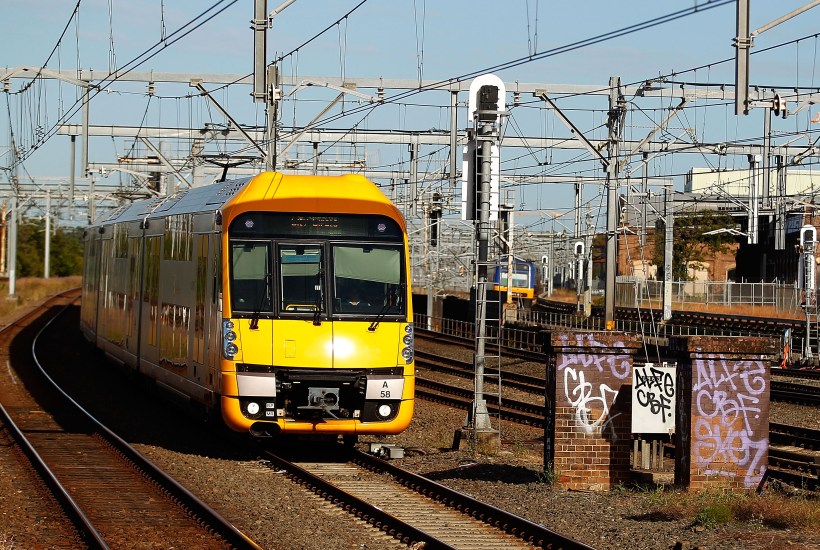It is well established that major Australian cities currently suffer from unsustainable levels of traffic congestion and inadequate rail and public transport infrastructure to ferry commuters to and from work. Some have cited cutting immigration and reducing apartment developments as ways to reduce congestion. However, neither of these ideas is future-proof and neither one sufficiently addresses the root of the problem or the need to meet the demands of a twenty-first century Australian population.
To this end, the New South Wales government plan to build the Sydney Metro from Rouse Hill to Bankstown over the next six years is a step in the right direction after two decades of woeful infrastructure project delays and mismanagement under the previous state administration.
The only way to adequately defeat the scourge of congestion is to use the value capture model to significantly expand the rail network to regions of Sydney, Melbourne and other major cities that lack a rail line or suffer from intense road and public transport congestion. Given the century-old outdated infrastructure of Sydney’s trains which has caused many a headache for commuters, new rail lines must utilise the modern Sydney Metro technology.
This is the optimum process by which state and federal governments can fund and plan rail-based public infrastructure. Sydney was originally planned as a city where the majority of people lived in a large suburban house and commute to work in the CBD predominantly by car, with Sydney’s train network complimenting the travel from the suburbs to the city.
In recent decades, however, there has been a reversal of this lifestyle as more and more people are choosing to live closer to the CBD and hubs of employment. Younger people are increasingly willing to trade off a house for higher density apartment living with convenient access to rail networks, shops, restaurants and other amenities to avoid road congestion. As the lifestyles of Sydneysiders evolve, so too should the design of the rail network to reflect this demand.
This model operates as a public-private partnership where the government relaxes planning laws and/or releases public land in an area designated for a rail line for development – usually as apartments and mixed-use complexes comprising of shopping centres downstairs and apartments or offices upstairs. The rail line will provide increased accessibility for the area, resulting in greater demand to reside there which will increase land and property values.
This increase in land and property values adjacent to the railway will subsequently be ‘captured’ as government revenue through taxes and levies on developments on the land alongside these rail lines. Value capture enables governments to significantly expand commuter railway infrastructure to meet increasing demand at minimal cost to the taxpayer while using captured revenue to fund further public infrastructure and other public services.
The prime example of the value capture model’s success is in Tokyo, which boasts the world’s most comprehensive urban railway network and where automobiles play a secondary role in transportation. So extensive is Tokyo’s rail system that most citizens actively choose not to drive to work, resulting in unbelievably light peak-hour car traffic. Real estate in the form of residential, retail and commercial developments contributed greatly to financing the construction of mostly private railway networks through the value capture model without using taxpayers’ money.
Rail connectivity has created decentralised commercial districts across the Tokyo metropolitan area including Shinjuku, Shinagawa, Shibuya, Roppongi and Marunouchi, with the effect that residents do not need to live within a close radius of a single central business district to conveniently access their employment. It should also be mentioned that while there are over fifteen different railway operator companies in Tokyo, only one of these is publicly owned. The competition between operators has ensured that fare prices remain affordable for everyday commuters.
By contrast, 69 per cent of Australians chose to drive to work in 2016. This is an unsustainable figure which will only lead to increased congestion on roads, loss of productivity and greater pollution which affects the quality of living for all urban Australians. Planning laws restricting high-rise apartment developments continuously push up property prices in locations closer to the central business district, where a shortage in housing supply is already evident. The Sydney housing market is significantly more unaffordable than Tokyo, despite the Tokyo Metropolitan Area having a population of around 13 million people, almost three times that of Sydney’s.
The clearest solution is to implement the value capture model in areas of Sydney that have inadequate rail public transport in the long term, such as the Northern Beaches and Greater Western Sydney. This would make the rail system in Sydney efficient and widespread enough that more people would rather catch the metro or train to work than drive, thereby increasing the livability of the city.
Greater metro and train connectivity will encourage businesses in the Sydney CBD to decentralise their offices, creating multiple centres of employment across the Sydney Metropolitan Area – a similar concept used in major cities around the world. In a further advantage, the increased housing supply made available around these new train stations by replacing old single-storey houses worth millions of dollars with many high-rise apartments will free up much more sustainable and affordable housing for workers and families in Sydney.
This can only be achieved when more Australians come to realise the benefits of public transportation development and the convenience afforded by higher-density living in close proximity to metro and train stations.
Given the rapid transition from large family cars such as the old Ford Falcons and Holden Commodores to small cars in the last 20 years, it might just be feasible that some younger generations may forego a car altogether in exchange for greater public transport convenience.
David Yao is a Research Associate with the Australian Taxpayers’ Alliance.
Got something to add? Join the discussion and comment below.
Got something to add? Join the discussion and comment below.
Get 10 issues for just $10
Subscribe to The Spectator Australia today for the next 10 magazine issues, plus full online access, for just $10.


























Comments
Don't miss out
Join the conversation with other Spectator Australia readers. Subscribe to leave a comment.
SUBSCRIBEAlready a subscriber? Log in